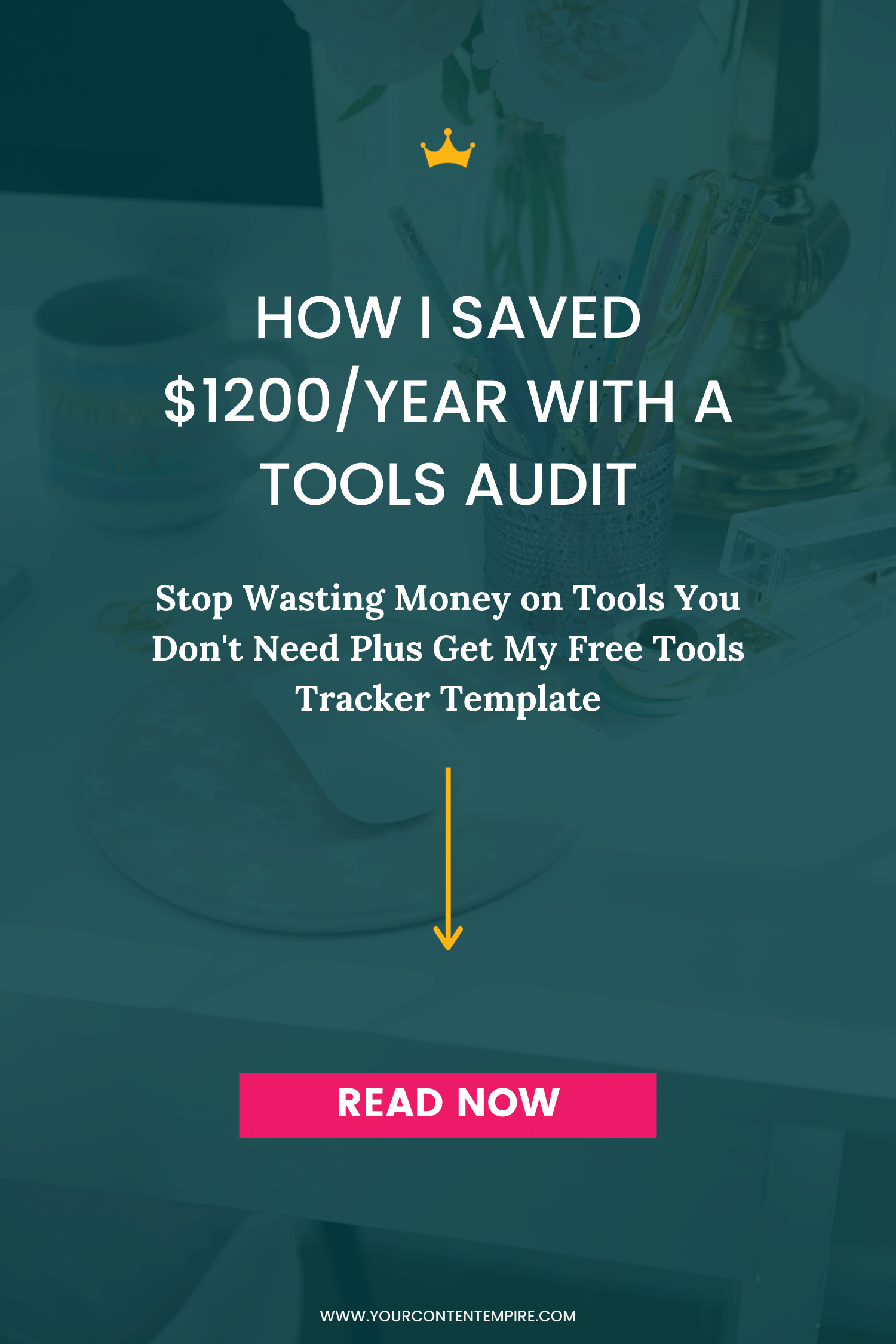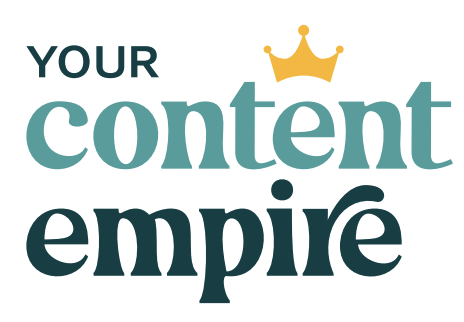Besides the obvious make more money method of increasing your dollars, another overlooked way is to cut your costs. That’s where a tools audit comes in.
A tools audit is a process of reviewing the tools and subscriptions that you've signed up for, in order to see if (a) they’re being used regularly (or sometimes at all); and (b) if there’s a better solution that could do the job better.
For myself, I know that I have a tendency to “collect” tools. Signing up for free trials that turn into paid subscriptions here without notification, going on an AppSumo shopping spree there and by the end of the year, I can’t even tell you what tools and subscriptions I’ve amassed.
But here’s why I wholeheartedly believe that a tools audit is more than worth going through the treasure hunt effort:
It helps you have more money.
Notice how I didn’t say save? Well it’s because there are two main (non-illegal, non-windfall) ways of making more money – earning it and (the frequently forgotten method of) spending it more wisely.
Now I’m not saying you should go without the things you want or need – but that you should question those wants. Especially when it comes to tools and subscriptions – we often sign up for them on a whim, maybe mistakenly believing they’re going to the Holy Grail to our tech troubles.
The last tools audit I went through helped me cut more than $1200 from my annual operating budget while at the same replacing tools with better versions. I found that a lot of what I was paying for were duplicates (from a function standpoint) or things I barely touched (or used only seasonally).
So how much $$$ are you sitting on in unused tools and subscriptions? Here’s a 5-step process to find out!
Step 1 – Create Your Tools Audit Template
I've created a tools audit template for you that you can download by clicking the banner below.
But if you want to set up your own, I recommend using some kind of spreadsheet – either a Google Sheet (my preference), Airtable, Excel, etc.
Here are some of the criteria you’ll want to include in your spreadsheet:
- Name of tool
- Category
- Is it paid or free?
- Renewal Cycle (monthly, annually, etc.)
- Renewal Date
- Cost (monthly, annual)
- Purpose
- Link to the tool’s login/access info
- Usage ranking – 1 to 10
- Happiness ranking – 1 to 10
- Notes
- Decision
Step 2 – Gather the Names of All Your Tools
You’re going to start by gathering all of your tools. Even though there are multiple columns in your spreadsheet, at this point just try to round up as many of your tools as you can.
This can be the trickiest part because it relies on you remembering everything you’ve signed up for or hunting through records to find them so we don’t want to get bogged down with filling out all the details right away (it’ll just slow you down).
Think in terms of: marketing tools, admin and project management tools, admin tools, financial tools, video tools, design tools, social media tools, website tools, team tools, productivity tools.
Where to look for these tools:
- First write down any tools or subscriptions that come to mind
- Go through your email accounts
- Visit any place where you typically buy your tools (i.e. AppSumo, etc.)
- Go through your bookkeeping records for tool receipts
- Go through your bookmarks folder
Step 3 – Gather Tool Details
Once you’ve identified all of your tools, it’s time to fill out the rest of the spreadsheet (payment information, access links, category and purpose). You can leave the scoring until the next step.
Payment information – Is it a free tool? Lifetime subscription? Or do you pay monthly or annually? What is the payment amount? What is the payment frequency?
Purpose – What do you use the tool for? This section works to help you find out if you have multiple tools that do the same thing.
Category – What is the category of the tool? Some of my categories include: Admin and Financial, Marketing, Productivity, Communication, Design
Access Info – What is the login link? Or how do you access this tool?
Step 4 – Assessments
Next, it’s time to score your tools based on how frequently you use them and how happy you are with them.
Usage Score: On a scale of 1 to 10, how regularly are you using this tool? Is it something you use all the time? Have never used? Only use seasonally or as needed?
Happiness Score: On a scale of 1 to 10, how happy are you with this tool? Is it the best thing since sliced bread? Or would you gladly jump ship if another option were available? Is the value and what you get out of it, worth the price you pay for it?
Step 5 – Cancel, Keep or Add
Now it’s time to make some key decisions. Are you going to cancel, keep or add to any of the tools in your audit?
First up, cancel:
Go through each of your tools and decide which ones you’re going to cancel. Start with the tools that have a low happiness score and usage score.
A common trap that entrepreneurs fall into is hoarding tools or resources because they think they might have a use for them some day.
If any of the tools your canceling are paid, log in and cancel them.
If there are some you’re not sure of whether you should keep them or not, put the tool on probation by updating the decision column.
Second, keep:
Now which of the remaining tools are you going to keep?
Start with the no-brainers – those with a high happiness and usage score. Then go through the rest and mark the ones you want to keep.
Finally, add:
Are you missing any tools? Or from the tools you’ve put on probation, are there better options out there?
This is your chance to do a little research and sign up for new tools or trials to replace some of your tools that you aren’t completely over the moon with.
What’s Next After Your Tools Audit?
The best way to keep your tools in check moving forward is to continue using your tools audit. I like to use it during my monthly planning sessions so I can review any tools that are coming up for renewal and decide whether I want to continue using them plus add in any tools I’ve signed up since the last time I updated the spreadsheet.
At the very least, you’ll want to repeat it annually.
Download the Tools Audit Spreadsheet Template
Save money on your tools by doing a tools audit and save time on your tools audit by download my FREE tools audit template:












